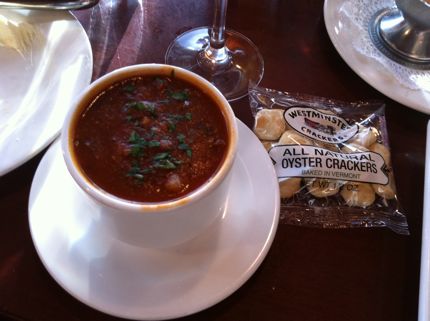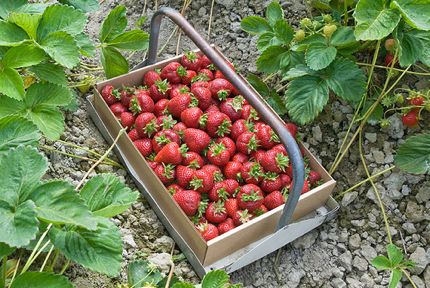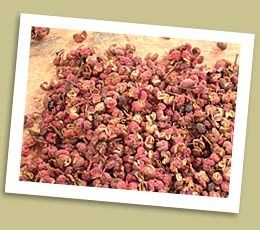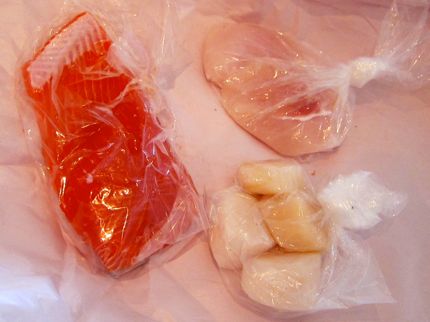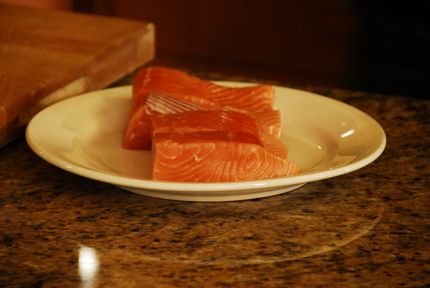Manhattan Clam Chowder
October 30, 2012
Manhattan Clam Chowder
Wine Varietal: Merlot
Serves 4 as an entrée; 8 as an appetizer
Chowder owes its name to the French chaudière, a three-legged heavy iron cooking pot. Fishermen returning to their villages would throw a portion of their catch into the pot as the villagers gathered to welcome the men home and share the meal. In the 1600s, the tradition crossed the Atlantic as French colonists settled what is now eastern Canada. Through the years, there evolved two main types of chowder. In northern New England, chowder is made with milk or cream. In Rhode Island and the New York area, chowder is made with tomatoes and broth. Manhattan-style chowder is generally healthier and more vegetable-based, as in this version. If served with a green salad and crusty whole-grain bread, this makes a one-saucepan dinner for four.
2 cups water
2 pounds Manila or native littleneck clams, purged and shells scrubbed
2 tablespoons olive oil
1/2 white or yellow onion, diced
2 cloves garlic, minced
1 stalk celery, diced
1/2 green bell pepper, stemmed, seeded, and diced
1/2 red bell pepper, stemmed, seeded, and diced
1 carrot, peeled and diced
6 small new potatoes, scrubbed and quartered, or 1 baking potato, scrubbed and diced
1 28-ounce can whole tomatoes, coarsely chopped, juice reserved
1/8 teaspoon Tabasco sauce
1 tablespoon Worcestershire sauce
1/2 teaspoon dried oregano, crumbled
1 bay leaf
1 teaspoon sugar
1/2 teaspoon salt
1/8 teaspoon freshly ground black pepper
1 tablespoon cornstarch
2 tablespoons water
1. In a large stockpot or Dutch oven, combine the water and clams. Cover and bring to a boil over high heat. Decrease the heat to medium-low, cover, and steam for 6 to 10 minutes, or until the clams open. Shake the pot occasionally to redistribute the clams.
2. Remove the clams to a bowl and reserve the cooking liquid. Discard any clams that have not opened. Strain the cooking liquid through a fine-meshed sieve lined with several thicknesses of dampened cheesecloth. Allow the clams to cool, then shuck the meat from the shells and discard the shells. Cover and place the clam meats in the refrigerator for later use. Measure 2 cups of the cooking liquid, and discard the rest or save for another use. Rinse and dry the stockpot or Dutch oven.
3. Place the olive oil in the stockpot over medium-high heat. Add the onion and garlic and cook 3 to 5 minutes, or until the onion is tender-crisp, stirring often. Add the celery, green and red bell pepper, carrot, and potato. Cover and cook 8 to 10 minutes, or until the vegetables are tender-crisp, stirring occasionally. If the vegetables begin to stick or brown too quickly, add 1 to 2 tablespoons of water and stir well.
4. Add the tomatoes and their juice, the reserved clam cooking liquid, the Tabasco sauce, Worcestershire sauce, oregano, bay leaf, sugar, salt, and pepper and stir well. Bring to a boil, decrease the heat, and simmer 15 to 20 minutes, covered, or until the potatoes and carrots are tender, stirring occasionally.
5. Taste the broth and add additional salt and pepper, if necessary. In a small bowl, mix the cornstarch with water until well blended. Remove the pot from the heat and add the cornstarch mixture. Stir well to blend completely, then return the pan to the heat. Cook 1 to 2 minutes more, or until the soup thickens, stirring occasionally. For an even thicker, creamier consistency, place half of the vegetable mixture (about 3 1/2 cups) in a food processor or blender and process until smooth. Add back to the pot and stir well. Add the reserved clams, stir well, and cook until the clams are warmed through. Do not overcook, or the clams will be tough.
6. Remove the bay leaf and divide the chowder among soup bowls.
Recipe from Braiden Rex-Johnson’s personal collection.
Photo by Braiden Rex-Johnson.

